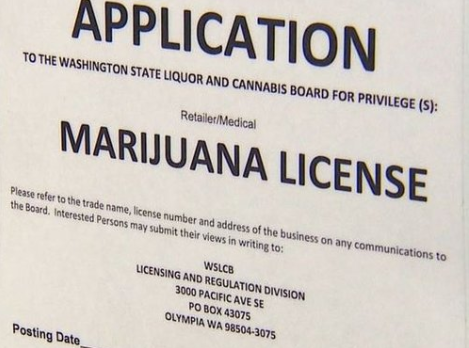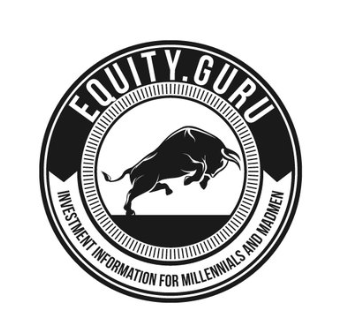Back in the day, when the cannabis craze was first dropping on the public markets, Canadians were forbidden from doing deals to buy Washington State cannabis growers. You had to be a local to get a license, and the method used to get one of those was comical. You had to fill out a form online and literally wait for your lottery number to get picked.
If you got picked, and passed a subsequent security check, you were allowed to grow and sell weed. But how you might do that was all on you. This left a lot of growers in a weird place – holding a license to print money but not having enough money to get their money printers up and running.
Canadians were happy to come to their aid, especially as, back then, Health Canada was doing everything it could to delay issuing Canadian licenses. In the absence of any movement on the Canadian front, it became all the rage for a hot minute to do ‘leaseback’ deals with Washington State growers, as a way of getting a piece of the action without technically owning the action.
That meant Canadians would buy or lease land, build a cannabis facility, buy the equipment, lay out the best practices, train the staff, license a brand, and pay the electricity bill in return for hefty fees.
For Washingtonians, this was a great deal, because the banks weren’t lending money to some knucklehead who won the liquor board lottery and may not have ever run a business before, and local investors couldn’t raise the sort of money needed quickly enough.
It was a bit of a mess. To some extent, it still is.
Crop Infrastructure (CROP.C) has a little of the scent of the old leaseback days to it, but things are a lot less ‘back of a napkin’ now. Now, we’re not dealing with knuckleheads who lucked out on an online lottery. Now the Washington weed industry has teeth. Now business is real.
And that business still needs access to capital.
CROP has a system for delivering that capital and helping the licensees move their businesses forward.
Each enclosed light-supplemented greenhouse is 3,680 sq/ft and should contains 1,350 plants. All strains will be 55-60 day flower cycle plants. The tenant growers pull 3 trays out of the finishing end of the greenhouse every other day and load three new trays into the starting end of the greenhouse every other day. CROP projects it’s tenant growers to harvest 30,645 grams every day for every fully operational 43,680 sq/ft facility.
Yes, 43,680 square feet in 12 separate self-contained state of the art greenhouses. To put that in perspective, Aurora Cannabis (ACB.T) currently grows out of 55,000 square feet.
43k sq ft is a decent sized grow. At full production, you’re talking 36 plants processed a day, or 1,080 per month expected to yield over 24,000 pounds per year once fully operational.
Half of that canopy is deep into construction right now, with phase II coming once its operational. This is no promise to one day get busy. The business is happening.
Where this really gets interesting is that CROP has access to power cheap enough that they thought about using it for cryptocurrency mining. With that inexpensive energy, they’re putting production costs at under $150/lb, or $0.33 per gram.
That’s CHEAP. It’s cheaper than Canada can deliver because Washington State regulators don’t place as many high capex demands on their grow facilities as Health Canada does.
When factoring in the potential of using trim for extractions, CROP projects tenant production numbers of $3.2 million p/mth, per 43,680 sq.ft, based on a $1k per lb sales price.
On the expense side, CROP isn’t leasing property and spending their money upgrading someone else’s site. They’re purchasing real estate and owning the whole enchilada, which means they’re anchored into an asset that’s worth something, like a Real Estate Investment Trust (REIT).
On their revenue side, they’re charging tenants a 60% preferential payback through lease and management fees. Once their capital is deployed in full, they apply a 30% land management fee – essentially a royalty – in perpetuity.
Producing is only half the battle in Washington State. There are a lot of guys producing ditchweed and selling trashbags filled with the stuff at auction, because actually establishing logistics and sales networks and packaging and branding and quality levels that consumers want to pay for is tough stuff. You might be able to grow, but can you sell?
So CROP has an operating license holder or tenant grower, who can take that product, brand it appropriately, put it into their sales network, get it on shelves, and share the proceeds.
What CROP is offering here isn’t standard vanilla leaseback financing. They’re closer to Cannabis Wheaton (CBW.V) than they are Vodis Pharmaceuticals (VP.C), which has been running an early model of the leaseback system in Washington State for two years.
The concept here isn’t ‘a cheap way in to the market‘, it’s a ‘strength in numbers‘ deal that allows the best growers in Washington State to work almost as a co-op, while CROP brings them quality and cash and clients and security and sales.
Part of that is infrastructure – roads, fertilizer storage, shipment facilities, and an electrical set up that brings in enough power that you might not want to stand too close to it lest your hairstyle forever change. The cost? $0.02 per kWh.
And, trust me on this – there is NO SHORTAGE of licensees lining up to be a part of this solution.
WHERE NEXT?
While Washington State presents early opportunities and a good regulatory system from which to work, it’s not the be all/end all for CROP. There are a multitude of other states that have either turned fully recreational (Colorado, California, Nevada), or are running hard with medical use (Florida, Arizona, the entire US northeast), and CROP promises to be aggressive in getting similar systems into other parts of Washington and those evolving marijuana states as opportunities arise.
In fact, this system lends itself to use in Canada, where the rules have started to evolve and licensees now number into the 90’s – to the point where the phrase ‘License Friday’ has been coined to describe the weekly approvals of new licenses.
While a lot of those companies have taken money from Cannabis Wheaton, or Invictus MD Strategies (IMH.C) or Cronos (CRON.V) or CannaRoyalty (CRZ.C) or (in California) FinCanna (CALI.C), or the soon-to-be public Greentec (GTEC), a system that brings about a low cost growing environment with a ready made sales channel, in a US state that is busy enough to bring in $1.4 billion in sales, and $300m+ in tax revenue annually, is well worth looking into.
Especially with a current market cap of just $47 million.
In Canada, a licensed cannabis grow property of 43k sq. ft. would be worth multiples more than what CROP is valued at by the market right now. I’ve been getting a lot of inquiries from investors asking where the value is in the current market, with so many LPs being beat up by market forces after years of high valuations.
Services. Picks and shovels. Branding. Products. International opportunities.
CROP hits the mark on all of these fronts. It’s not a bet on farming, it’s a bet that farmers will need a lot of help to grow (no pun intended), and will bet the farm (okay, pun intended) on a way to be able to focus on just what they do best.
— Chris Parry
FULL DISCLOSURE: CROP is an Equity.Guru marketing client
Disclaimer: ALWAYS DO YOUR OWN RESEARCH and consult with a licensed investment professional before making an investment. This communication should not be used as a basis for making any investment.


